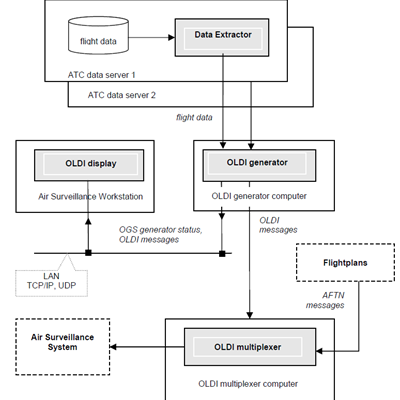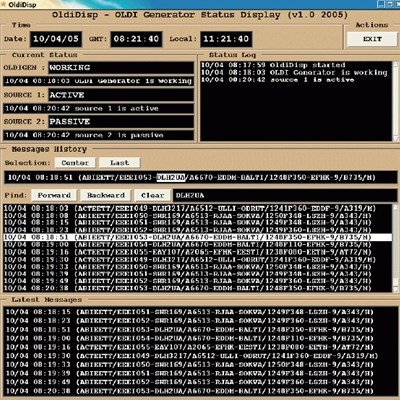The purpose of this real-time on-line data interchange generator is serving the military air surveillance with associations made by the civil air traffic control.
Serving civil air traffic control data to military air surveillance
Secondary surveillance radar (SSR) is a radar system used in air traffic control (ATC), that not only detects and measures the position of aircraft i.e. range and bearing, but also requests additional information from the aircraft itself such as its identity and altitude.
Unlike primary radar systems that measure only the range and bearing of targets by detecting reflected radio signals, SSR relies on targets equipped with a radar transponder, which replies to each interrogation signal by transmitting a response containing encoded data.
SSR is based on the military identification friend or foe (IFF) technology originally developed during World War II and therefore the two systems are still compatible.
- The secondary Source radar identifies a flying objects in the air space, with SSR code
- A civil air traffic control operators then identifies the unknown flying object, and associates the SSR code with the appropriate civil flight number
- The association then has to be served for military air surveillance as soon as possible. This means in real-time.
The flight associations are available in the civil air control system in form of:
- Online Data Interchange (OLDI) transit messages from other air traffic control systems
- New flight associations created by the operator of the air traffic controller workstation
The custom made information system developed by R-Systems Ltd
- extracts the necessary data (1-2% of all of the data)
- composes the messages according to the Online Data Interchange (OLDI) format, a standard by European Organization for the Safety of Air Navigation.
- combines OLDI messages with the Aeronautical Fixed Telecommunication Network (AFTN) messages from flight plans
- transmits everything to the military air surveillance system
Mission critical
The system is highly reliable
Online realtime
All the data is reflected between the counterparts online in real time
Complex
Lot of various inputs make up a complex algorithm

- The Data Extractor extracts from the flight data servers the flight plan messages, the OLDI transit messages exchanged with other flight management centres and the association events created by air traffic controllers.
- The OLDI Generator compiles OLDI messages about the flights for which the air traffic controllers have created associations between the SSR code and the flight plan.
- The OLDI Display or status indicator allows monitoring both the state of the OLDI generator system and the flow of the released OLDI messages.
- The OLDI Multiplexer puts the OLDI messages and the flight plan data coming from the AFTN channel together into one data channel.


Estonian Defence Forces
Url: www.mil.ee
Estonia's defence policy aims to guarantee the preservation of the independence and sovereignty of the state, the integrity of its land area, territorial waters and airspace and its constitutional order.
